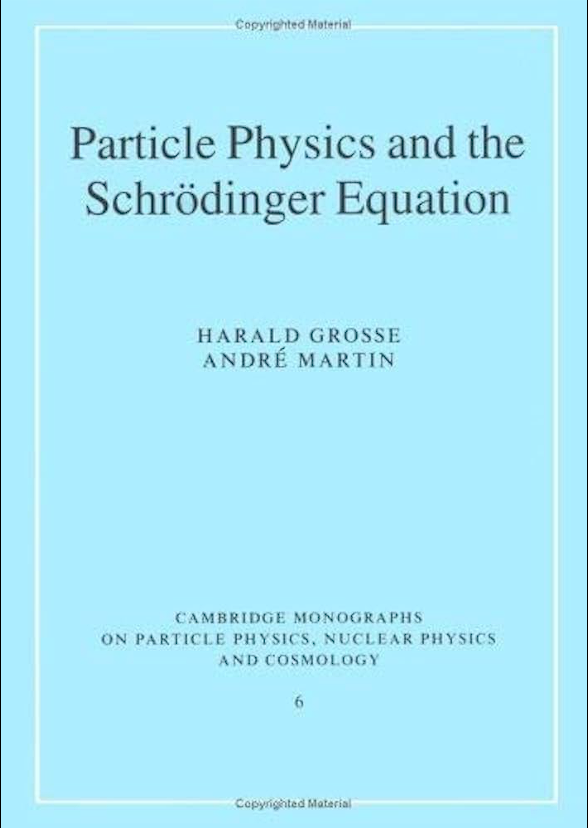
Particle Physics and the Schrodinger Equation
Author: HARALD GROSSE and ANDRE MARTIN Category: fisika partikel Publisher: CAMBRIDGE UNIVERSITY PRESS ISBN: 978-0-521-01778-7Until 1975 the Schrodinger equation had rather little to do with modern
particle physics, with a few exceptions. After November 1974, when it was
understood that the J/xp was made of heavy quark-antiquark pairs, there
was a renewed interest in potential models of hadrons, which continued
with the discovery of the b quark in 1977. The parallel with positronium
was obvious; this is the origin of the neologism “quarkonium”. However,
in contrast to positronium, which is dominated by the Coulomb potential,
the potential between quarks was not known and outside explicit
numerical calculations with specific models, there was a definite need for
new theoretical tools to study the energy levels, partial widths, radiative
transitions, etc. for large classes of potentials. This led to the discovery
of a large number of completely new rigorous results on the Schrodinger
equation which are interesting not only for the qualitative understanding
of quarkonium and more generally hadrons but also in themselves and
which can be in turn applied to other fields such as atomic physics. All
this material is scattered in various physics journals, except for the Physics
Reports by Quigg and Rosner on the one hand and by the present authors
on the other hand, which are partly obsolete, and the review by one
of us (A.M.) in the proceedings of the 1986 Schladming “Internationale
Universitatswochen fur Kernphysik”, to which we will refer later. There
was a clear need to collect the most important exact results and present
them in an orderly way. This is what we are trying to do in the present
book, or least up to a certain cut-off date, since new theorems and new
applications continue to appear. This date may look rather far away since
it is the beginning of 1995; for instance, the results of J.M. Richard and
one of us (A.M.) on the Qc particle are not included.
There are two focuses of the book. On the one hand we have rigorous
theorems. On the other hand, we have applications to atomic and particle
physics which were spectacularly successful, but there is absolutely no
Back